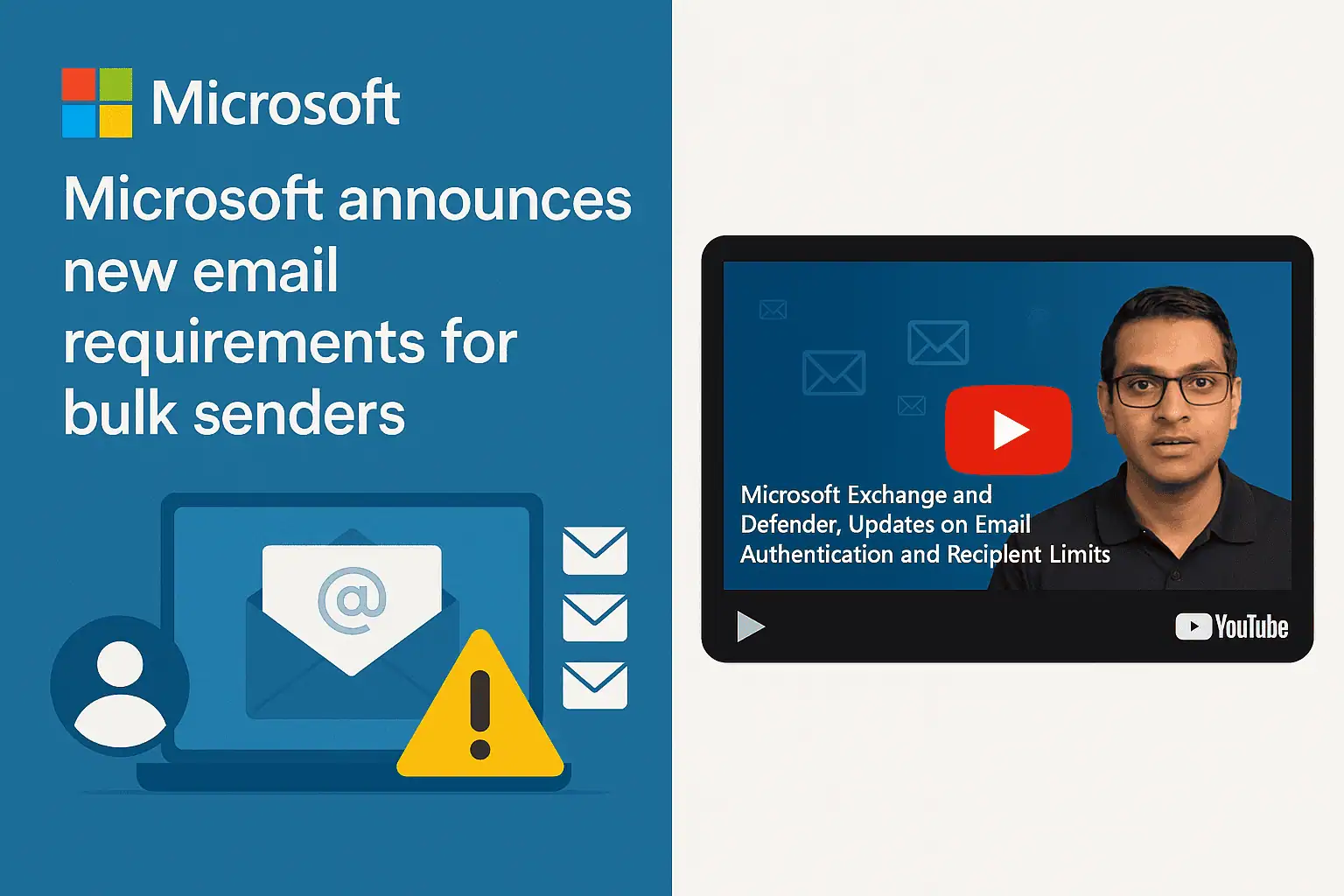
In an effort to enhance email security and reduce spam, Microsoft has announced new requirements for bulk email senders. Starting January 2025, Exchange Online will enforce a daily limit of 2,000 external recipients for bulk emails. This measure aims to prevent the misuse of Exchange Online resources and ensure fair usage among all customers.
Understanding the New Limitations
Currently, Exchange Online enforces a Recipient Rate limit of 10,000 recipients per day. The newly introduced External Recipient Rate (ERR) limit of 2,000 will function as a sub-limit within this existing framework. This means that while the overall recipient limit remains unchanged, no more than 2,000 of these recipients can be external to the organization within a 24-hour period. The implementation of this limit will occur in two phases: Petri IT Knowledgebase+2strategy365.co.uk+2BleepingComputer+2
- Phase 1: Beginning January 1, 2025, the ERR limit will apply to cloud-hosted mailboxes of all newly created tenants.
- Phase 2: Between July and December 2025, Microsoft will extend the ERR limit to cloud-hosted mailboxes of existing tenants.
Rationale Behind the Change
Microsoft’s decision aligns with industry trends aimed at combating spam and enhancing email security. By imposing these limits, Microsoft seeks to prevent customers from abusing Exchange Online resources and to promote fair usage.
Recommendations for Bulk Email Senders
Organizations that need to send bulk emails exceeding the 2,000 external recipient limit are advised to transition to alternative services designed for high-volume email communications. Microsoft recommends using Azure Communication Services for Email, a platform specifically tailored for business-to-consumer communication via large-scale email dispatches.
Additionally, Microsoft emphasizes the importance of implementing robust email authentication protocols. Bulk email senders are encouraged to authenticate their emails using SPF, DKIM, and DMARC standards to enhance deliverability and reduce the risk of phishing attacks. While Microsoft has not specified an enforcement date for these authentication requirements, it is prudent for organizations to adopt these measures proactively. Microsoft Tech Community
Steps to Ensure Compliance
To align with Microsoft’s new requirements and maintain effective email communication, organizations should consider the following steps:
- Evaluate Current Email Practices: Assess your organization’s current email sending patterns to determine if they exceed the forthcoming ERR limits. Petri IT Knowledgebase+6WinBuzzer+6Data Driven Marketing Software | Spotler+6
- Implement Email Authentication Protocols: Set up SPF, DKIM, and DMARC records for your domain to authenticate outgoing emails and protect against spoofing.
- Explore Alternative Email Services: If your email volume exceeds the new limits, consider transitioning to services like Azure Communication Services for Email, which are designed to handle high-volume external communications.
- Educate Your Team: Inform your organization’s email users and administrators about these changes to ensure compliance and avoid disruptions in email deliverability.
- Monitor Email Deliverability: Regularly track your email performance metrics to identify and address any issues related to deliverability or compliance.
By proactively adopting these measures, organizations can ensure seamless email operations and maintain compliance with Microsoft’s evolving email policies.
Conclusion
Microsoft’s upcoming limitations on bulk email sending reflect a broader industry effort to enhance email security and reduce spam. Organizations must stay informed about these changes and take proactive steps to adapt their email strategies accordingly. Implementing robust authentication protocols and considering alternative email services for high-volume communications will be essential in navigating this new landscape.
For more insights and updates on technology and email communication strategies, visit Smart Village Technology.
